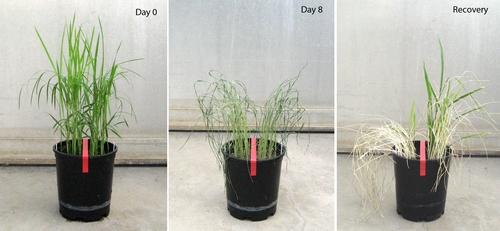Swaying both ways
Imagine if rice – yes, that semiaquatic species that is typically cultivated under partially flooded conditions – could be both flood- and drought-tolerant. Such a rice variety would benefit rice growers and consumers worldwide and would be less vulnerable to weather extremes that may result from global climate change.
Now UC Riverside experiments demonstrate that such rice is already here. Genetics professor Julia Bailey-Serres’ research group reports in a recent issue of The Plant Cell that flood-tolerant rice is also better able to recover from drought.
“Flood tolerance does not reduce drought tolerance in these rice plants, and appears to even benefit them when they encounter drought,” Bailey-Serres says.
She and her team – Takeshi Fukao, a senior researcher, and Elaine Yeung, an undergraduate student – focused on Sub1A, a gene responsible for flood or “submergence” tolerance in rice. Sub1A works by making the plant dormant during submergence, allowing it to conserve energy until the floodwaters recede. Indeed, rice with the Sub1A gene can survive more than two weeks of complete submergence.
Plant breeders have already profited farmers worldwide – especially in South Asia – by having transferred Sub1A into high-yielding rice varieties without compromising these varieties’ desirable traits — such as high yield, good grain quality, and pest and disease resistance.
Bailey-Serres’s lab found that in addition to providing robust submergence tolerance, Sub1A aids survival of drought. The researchers report that at the molecular level Sub1A serves as a convergence point between submergence and drought response pathways, allowing rice plants to survive and re-grow after both weather extremes.
“Sub1A properly coordinates physiological and molecular responses to cellular water deficit when this deficit occurs independently, as in a time of drought, or following ‘desubmergence,’ which takes place when flood waters recede,” says Bailey-Serres who was the lead recipient of the 2008 USDA National Research Initiative Discovery Award.
Next, her colleagues at the International Rice Research Institute in the Philippines will test the Sub1A rice for drought tolerance in the field. What are some other implications of this research? One that comes to mind is that the “Got Rice?” slogan might have to drop the question mark, and put in its place a solid period!

